Bermuda Garrison
The Bermuda Garrison was the military establishment maintained on the British Overseas Territory of Bermuda by the regular British Army, and its local militia and voluntary reserves from 1701 to 1957. The garrison evolved from an independent company, to a company of Royal Garrison Battalion during the American War of Independence, and a steadily growing and diversifying force of artillery and infantry with various supporting corps from the French Revolution onwards. During the American War of Independence, the garrison in Bermuda fell under the military Commander-in-Chief of North America. Subsequently, it was part of the Nova Scotia Command until 1868, and was an independent Bermuda Command from then 'til its closure in 1957.
| Bermuda Garrison | |
|---|---|
| Bermuda | |
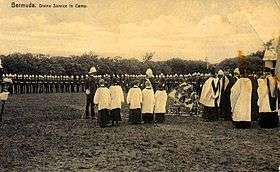 Presentation of Colours at Prospect Camp | |
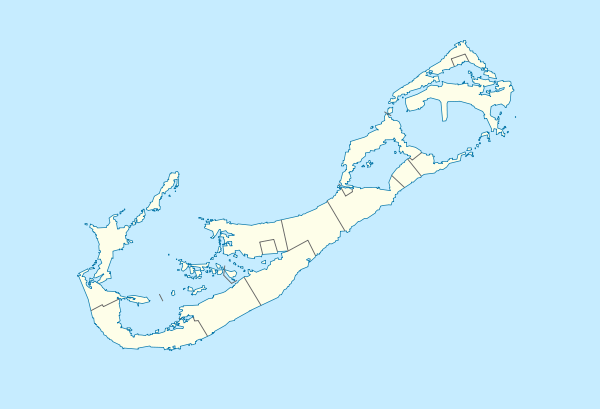 Bermuda Garrison Location in Bermuda | |
| Coordinates | 32.2994949°N 64.7653454°W |
| Type | Barracks |
| Site information | |
| Owner | Ministry of Defence |
| Operator | |
| Site history | |
| Built | 1793 |
| Built for | War Office |
| In use | 1793 - 1957 |
From the 1790s onwards, the garrison existed primarily to defend the Royal Naval Dockyard (HM Dockyard Bermuda) and other facilities in Bermuda that were important to Imperial security until the HM Dockyard was reduced to a base (a process that was carried out between 1951 and 1957).
Although the last professional soldiers (a detachment of the Duke of Cornwall's Light Infantry) were withdrawn in 1957, and the Garrison ceased to exist, two part-time components – the Bermuda Militia Artillery and the Bermuda Volunteer Rifle Corps (retitled Bermuda Rifles) – continued to exist until 1965, when they amalgamated to create the current Royal Bermuda Regiment.
1609 to 1701
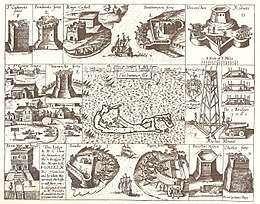
The English colony of Bermuda was settled accidentally in 1609 by the Virginia Company, when its flagship, the Sea Venture was wrecked off the archipelago. Although most of the settlers eventually completed their journey to Jamestown, Virginia, the company remained in possession of Bermuda, with Virginia's borders officially extended far enough out to sea to include Bermuda in 1612. In the same year, a Governor and more settlers arrived to join the three men left behind from the Sea Venture. From then until 1701, Bermuda's defence was left entirely in the hands of her own militias.
Bermuda tended toward the Royalist side during the English Civil War, being the first of six colonies to recognise Charles II as King on the execution of his father, Charles I, in 1649, and was one of those targeted by the Rump Parliament in An Act for prohibiting Trade with the Barbadoes, Virginia, Bermuda and Antego, which was passed on the 30 October 1650. With control of the "army" (the militia), the colony's Royalists deposed the Governor, Captain Thomas Turner, elected John Trimingham to replace him, and exiled many of its Parliamentary-leaning Independents to settle the Bahamas under William Sayle as the Eleutheran Adventurers. Bermuda's defences (coastal artillery batteries and forts, as well as its militia) were too powerful for the task force sent in 1651 by Parliament under the command of Admiral Sir George Ayscue to capture the Royalist colonies. The Parliamentary Navy was consequently forced to blockade Bermuda for several months 'til the Bermudians negotiated a peace.
Alongside Bermuda's militia (as in England, a conscripted infantry force) was a standing body of volunteers (and some convicts, sentenced to carrying out military service) trained as artillery men to garrison the forts and batteries built by the local government. The earliest of these forts built were the first stone fortifications (and buildings) in the English New World, the first coastal artillery, and are today the oldest English New World fortifications still standing. Together with St. George's town, the forts near the town (including the Castle Islands Fortifications) are today a UNESCO World Heritage Site.
In addition to the full-time artillerymen, all of the colony's men of military age were obliged to turn out for militia training and in case of war. They were organised as infantry and (after the Civil War) a Troop of Horse.
1701 to 1768
In 1701, the threat of war led the English government to post an Independent Company of regular soldiers to Bermuda, where the militia continued to function as a standby in case of war or insurrection. The company, a detachment of the 2nd Foot of the English Army, arrived in Bermuda along with the new Governor, Captain Benjamin Bennett, aboard HMS Lincoln, in May 1701, and was composed of Captain Lancelot Sandys, Lieutenant Robert Henly, two sergeants, two corporals, fifty private soldiers, and a drummer. General William Selwyn had objected to their detachment.[1] Despite this small regular detachment, the militia remained Bermuda's primary defence force. Following the conclusion of the Seven Years' War in 1763, the Independent Company was removed. A company of the 9th Foot was detached from Florida, reinforced with a detachment from the Bahamas Independent Company, but this force was withdrawn in 1768, leaving only the militia.
1793 to 1815
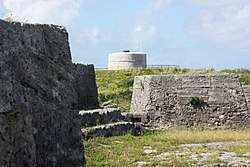
Regular soldiers invalided from continental battlefields as part of the Royal Garrison Battalion had been stationed in Bermuda between 1778 and 1784 during the American War of Independence, but were withdrawn following the Treaty of Paris. US independence cost the Royal Navy all of her continental bases between the Canadian Maritimes and the West Indies. As a result, the Admiralty began purchasing land around Bermuda, especially at the under-developed West End, with a view to establishing a dockyard and naval base there. The Royal Naval establishment began with facilities in the town of St. George's in 1795, and by 1812 the island hosted an Admiralty and a dockyard, as well as a naval squadron during the winter. These facilities were to play a major role in the American War of 1812, and Bermuda would develop into the Royal Navy's largest and most important base in the Western Hemisphere.
Following the French Revolution, a detachment of the 47th Foot was detached to Bermuda in 1793. Regular soldiers would continue to be stationed in Bermuda from then 'til 1957. With a regular garrison, Bermudians lost interest in maintaining militias. The Militia Acts were allowed to lapse and, other than a brief resurgence during the American War of 1812, the Bermuda Government would not raise local forces until pressed by the Secretary of State for War to create the Bermuda Militia Artillery and the Bermuda Volunteer Rifle Corps eight decades later (although there were a number of short-lived attempts to maintain militia without the contribution of the Parliament of Bermuda).
19th century
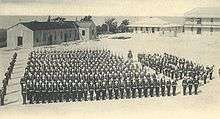

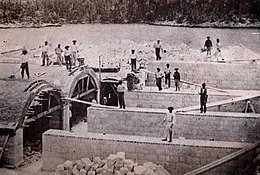

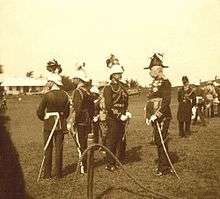

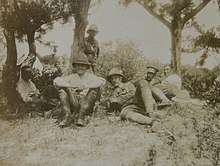

_Gun_on_Moncrieff_disappearing_mount%2C_at_Scaur_Hill_Fort%2C_Bermuda.jpg)
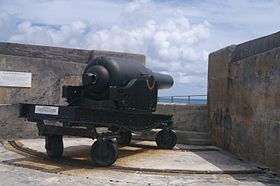
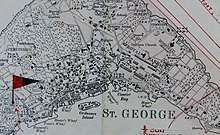
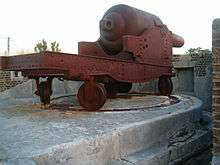
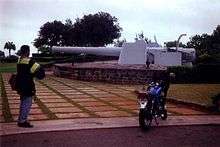
With the buildup of the Dockyard, there was a corresponding increase in the size of the Army garrison that was to protect it. This included the construction of numerous fortifications and coastal artillery batteries (the forts, by and large, were also built to house coastal artillery), manned by the Royal Artillery (Royal Garrison Artillery, or RGA), and camps where infantry troops were stationed.
From the beginning, the Royal Engineers were an important part of the Garrison, improving pre-existing fortifications and batteries, like Fort St. Catherine's, building new ones, surveying the island, building a causeway to link St. George's Island to the Main Island, a lighthouse at Gibb's Hill, and various other facilities. A system of military roads was built, also, as the rudimentary roads that had existed before had been used by islanders primarily to take the shortest route to the shore, with most passengers and wares moved around the archipelago by boats.
The Royal Army Ordnance Corps operated a depot at Ordnance Island, in St. George's, to supply munitions to the coastal artillery. A secret gunpowder store was also built underground at Agar's Island in 1870.[2][3] Munitions were also held at the Royal Army Service Corps wharf on East Broadway, at the outskirts of the City of Hamilton. The RASC had another wharf in the town of St. George's near to Ordnance Island.
The St. George's Garrison was a large base including barracks and a hospital to the East and North of St. George's town. Used primarily by the RGA, following the infantry's relocation to Prospect Camp, this large base served the surrounding forts and batteries. As with the fortifications built previously by the colony's militia, the fortifications clustered most thickly at the East End of Bermuda, near St. George's. This was because the primary passage through the surrounding reefline brought vessels close to the Eastern shores of St. David's Island and St. George's Island. There were forts and batteries at other strategic locations throughout Bermuda, however.
Originally, most of the regular soldiers were deployed around St. George's, but with the development of the City of Hamilton in the central parishes, which had become the capital in 1815, and of the HM Dockyard at the West End, it became necessary to redeploy the army westwards as well. The heaviest cluster of forts and batteries remained at the East End, where shipping passed in through the reefline from the open Atlantic, and this meant that the artillery soldiers continued to concentrate most heavily at the East End. The infantry, however, established a large camp at the centre of Bermuda circa 1855. Located in Devonshire, on the outskirts of Hamilton, it was called Prospect Camp. The camp housed other units, as well, including Royal Garrison Artillery detachments at a fort built within the camp, Prospect Fort. Although Prospect Camp had extensive areas for training, it was surrounded by public roads and residential areas, and had no safe area for a rifle range. Consequently, a second camp, Warwick Camp, was added primarily to provide rifle ranges to the soldiers of the Garrison, and the Dockyard's own Royal Marine detachment (and those of the ships stationed there).
Various other smaller sites were used by the Army over the history of the garrison. These included Watford Island and the southern half of Boaz Island, both part of the Admiralty land holdings attached to the HM Dockyard, where Clarence Barracks housed a considerable number of soldiers, and Agar's Island, where substantial underground munitions bunkers were built.
Although numerous Irish Catholic and Protestant soldiers and units had served in the British Army before the 19th Century, Catholicism had actually been outlawed in England and Ireland since the Reformation, and Ireland itself was nominally a separate state, the Kingdom of Ireland, ruled by a mostly-Protestant British settler minority. Enfranchisement of Catholics in Britain and its colonies followed the incorporation of the Kingdom of Ireland within the Kingdom of Great Britain, to form the United Kingdom of Great Britain and Ireland in 1801. The Roman Catholic Relief Act 1829 allowed British and Irish Catholics to sit in the Parliament. In Bermuda, the law permitted any church that legally operated in the United Kingdom to do so in the colony, and Presbyterian and Methodist churches operated freely alongside the Church of England. Although the Roman Catholic Church began to operate openly in Bermuda in the 19th century, its priests were not allowed, at first, to conduct baptisms, weddings or funerals. However, with large numbers of Catholic soldiers, particularly from Ireland, serving in the Bermuda Garrison, the first Catholic services were conducted by British Army chaplains during the 19th Century. Mount Saint Agnes Academy, a private school operated by the Roman Catholic Church of Bermuda, opened in 1890 at the behest of officers of the 86th (Royal County Down) Regiment of Foot (which was posted to Bermuda from 1880 to 1883), who had requested from the Archbishop of Halifax, Nova Scotia a school for the children of Irish Catholic soldiers.[4][5]
The 1853 to 1856 Crimean War highlighted the British Army's shortages of the men, material, and money to fight an expeditionary campaign against a large, modern army. Following the war, and the threat of invasion by France resulting from an assassination attempt on the French Emperor (perceived to originate in Britain), the British Army was under great pressure to provide a permanent force in Britain capable either of defending the country in case of invasion, or of mounting an expeditionary campaign similar to the Crimea. As its funding was not to be increased, it could only do this by redeploying units back to Britain from imperial garrison duty.
Britain's primary motivation in supporting the Ottoman Empire against Russia (and its serial attempts to prop-up friendly governments in the buffer state of Afghanistan) was to prevent the border of the Russian Empire advancing to meet that of British India. Potential Russian interference with Britain's East Asian trade was also a concern. Following the Great Mutiny of 1857, it was feared that Indian units might be encouraged to rebel should there be a Russian invasion, and might rebel in any case were British Army units in India reduced. This placed a greater importance on reducing garrisons in quieter parts of the empire, and on replacing them where required with locally raised reserve units.[6]
In 1892, with the UK Government having tried for years in vain to encourage the Bermudian Government to raise part-time units to allow the reduction of the regular component of the garrison, the local parliament authorised the creation of the Bermuda Militia Artillery and the Bermuda Volunteer Rifle Corps as reserves for the RGA and the regular infantry.[7]
The Bermudian parliament's prior reluctance to the creation of such units was partly due to the concern that social unrest might result from creating either racially segregated or integrated units, and partly due to fears that it would be saddled with the entire cost of the military defences. The Secretary of State for War finally achieved their support by ransoming Bermuda's nascent tourism industry.
Bermuda's tourism had arisen without conscious planning, and the hotels at first available to the wealthy visitors who pioneered holidaying on the island were generally small and uninspiring. Bermudian business and political leaders realised that a large, first-rate hotel was required. The development of the hotel hinged on American investment, however. Foreigners were not, at that time, permitted to buy land or businesses in Bermuda, lest their governments use protecting those interests as a pretext for invasion. The USA was seen, throughout the 19th Century, as the primary threat to Bermuda.
As the Secretary of State for War put it, Bermuda was, at the time, considered by the UK government more as a naval and military base than as a colony. Allowing American investment in the new hotel, as well as plans to widen the channel into St. George's Harbour (necessary in an age where ships had grown too large to safely use the existing channel, but which it was argued would make an invader's task easier), were seen as weakening Bermuda's defence. The Secretary of State for War insisted that he could not approve either project while Bermuda contributed nothing to her own defence. As a result, two Acts of the Bermudian Parliament were passed in 1892 authorising the creation of the Bermuda Volunteer Rifle Corps and the Bermuda Militia Artillery, and the project to build the Princess Hotel was allowed to move forward.
A third act had authorised the creation of a unit of submarine (underwater) miners militia. This would have followed in the pattern of the Submarine Mining Militia formed in Britain in 1878 and tasked with defending major ports. They received a minimum of fifty-five days training per year, and were recruited from experienced boatmen. In Bermuda, the unit was intended to operate boat from the Royal Army Service Corps docks in Hamilton and St. George's, tending to the underwater mine defences, but the unit was never raised.
Instead, the Royal Engineers 27th Company (Submarine Mining) which had been permanently reassigned from Halifax, Nova Scotia to Bermuda in 1888 (part of the company had been split off to create the new 40th Company, which remained in Halifax), continued to maintain the mine defences unaided.[8][9][10][11] In 1900 the Royal Engineers Submarine Mining Companies also assumed responsibility for operating electric searchlights defending harbours.
Unit codes were assigned to all three legislated reserve units for marking the stock disks of the Martini-Henry rifle: M./BER. A. for the Bermuda Militia Artillery; V./BER. for the Bermuda Volunteers Rifle Corps; M./BER. S.M. for the Bermuda Submarine Miners. The part-time units were funded by the UK Government.
The trend from then on was to reduce the regular soldiers, and to shift an increasing part of the burden of the garrison on the part-time units. This process took many decades, however. The number of soldiers began to decline, and then quickly rose again. For the remainder of the 19th Century, military personnel made up a quarter of Bermuda's population, and defence spending, not agriculture or tourism, was the central leg of the Bermudian economy. Many wealthy American visitors actually brought their daughters to holiday on the island specifically in hopes of marrying them to the young, aristocratic military and naval officers who were posted to Bermuda (this put them in competition with local women, as Bermuda had a disproportionate number of spinsters). The new Princess Hotel made the most of this market, sponsoring dances and other social gatherings to which the officers of the garrison were invited to mingle with guests.
In addition to components of the army garrison, the Royal Marines, part of the Royal Navy, maintained detachments at the Royal Naval Dockyard which included both infantry elements and gunners of the Royal Marine Artillery.
First World War
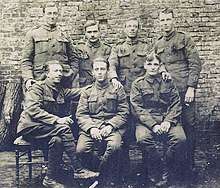


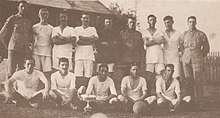
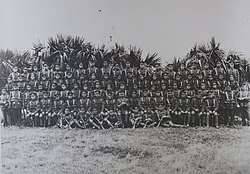
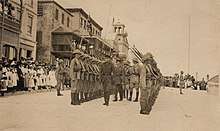
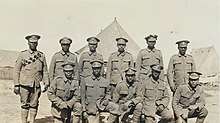
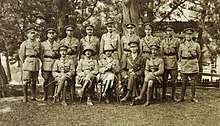
On the declaration of the First World War, Lieutenant-Colonel George Bunbury McAndrew, the Commanding Officer of the 2 Battalion, the Lincolnshire Regiment, was acting Governor of Bermuda as the actual Governor, Commander-in-Chief and Vice-Admiral (Bermuda's Governors, from the time the bases were built up, were normally military officers, especially from the Royal Engineers or the Royal Artillery), Lieutenant-General Sir George Bullock was off the island, and oversaw Bermuda's placement onto a war footing. Lt. Gen. Bullock resumed command on his return to Bermuda, and was succeeded as Governor and Commander-in-Chief by General Sir James Willcocks in May, 1917.
The 2 Lincolns were soon sent to England, preparatory to deployment to France, being replaced by a succession of Canadian battalions. On 19 August 1914, the British Government requested from the Adjutant General of the Canadian Militia a Canadian battalion to replace the 2 Lincolns, a request that was agreed to on 22 August by Lieutenant-Colonel Alfred Octave Fages, commanding the Royal Canadian Regiment. As with soldiers of the British Territorial Force (including the BVRC and BMA), Canadian Militia soldiers were recruited for home defence, and could not be compelled to serve overseas. Consequently, the soldiers of the RCR were asked to volunteer as a unit to the deployment. The unit relieved the 2 Lincolns at Prospect Camp on 13 September 1914. It would use the next eleven months in Bermuda to train in preparation for the Western Front. When it was deployed across the Atlantic on 13 August 1915, it was replaced by The 38th Battalion of the Canadian Expeditionary Force (CEF). When this battalion, too, deployed to the European theatre of conflict, it was replaced by the 163rd (French-Canadian) Battalion CEF, which arrived there on 29 May 1916. It was replaced by a British Territorial Force unit, the 2/4th Battalion. East Yorkshire Regiment on 18 November 1916, and departed for Europe on 27 November 1916.[12] The 2/4th East Yorks remained in Bermuda for the duration of the war.[13]
On the declaration of War in 1914, the BMA was already embodied for annual training and moved onto a war footing. The BVRC embodied, and both units took up their wartime roles. Many Bermudians also enlisted or were commissioned into other British Army units in the United Kingdom and elsewhere, and in dominion military units, the latter including a significant number of Bermudians in the CEF.
The BMA immediately began the process of forming a contingent of volunteers in 1914 to be despatched to the Western Front, but was prevented from doing so. However, two contingents eventually served as part of the larger Royal Garrison Artillery detachment to the Western Front. The first, 201 officers and men, under the command of Major Thomas Melville Dill (who handed overall command of the BMA to a subordinate in order to lead the overseas contingent), left for France on 31 May 1916. A second contingent, of two officers and sixty other ranks, left Bermuda on 6 May 1917, and was merged with the first contingent in France. The contingent, titled the Bermuda Contingent, Royal Garrison Artillery, served primarily in ammunition supply, at dumps, and in delivering ammunition to batteries in the field. The Contingent served at the Somme from June to December 1916. They were then moved away from the Front, serving on docks until April, 1917, when they were attached to the Canadian Corps at Vimy Ridge, serving in the battle for Vimy Ridge. They were at Ypres, from 24 June until 22 October, where three men were killed and several wounded. Two men received the Military Medal. In Bermuda, the BMA was demobilised on 31 December 1918, and when the overseas contingent returned in July, 1919, it was to no unit. Thirty men who chose to remain on temporarily re-enlisted in the RGA, and the rest were demobilised. The unit was re-embodied on 3 June 1920, when its previous members were called up and joined by fifty new recruits.[14]
The BVRC formed a company-sized contingent, Captain Richard Tucker and 88 other ranks, in December 1914, which trained over the winter and spring before being sent to England in June, 1915. As there was a shortage of officers, the Governor and Commander-in-Chief, Lieutenant-General Sir George Bullock, filled the role of adjutant, a position normally filled by a captain. As a consequence, the contingent was popularly known as Bullock's Boys. It had been intended for the contingent to join the 2 Lincolns, but that battalion was already in France when they arrived and it became an extra company of 1 Lincolns, instead, deployed to the Western Front in July. It had lost more than half of its strength by September, 1916, and could no longer compose a rifle company. It was merged with the newly arrived BVRC Second Contingent, of one officer and 36 other ranks, who had trained in Bermuda as Vickers machine gunners. They were stripped of their Vickers machine guns and retrained as Lewis light machinegunners, providing 12 gun teams to 1 Lincolns headquarters. By the War's end, the two contingents had lost over 75% of their combined strength. Forty had died on active service, one received the O.B.E, and six the Military Medal. Sixteen enlisted men from the two contingents were commissioned, including the Sergeant Major of the First Contingent, Colour-Sergeant R.C. Earl, who would become Commanding Officer of the BVRC after the War. In 1918, 1 Lincolns was withdrawn from France and sent to Ireland to combat the army of the Irish Republic, declared in the 1916 Easter Rising.[15][16][17][18][19]
Between the wars
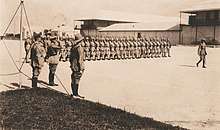
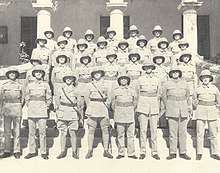
The inter-war period finally saw the significant reduction of the regular army components of the garrison, and the transfer of most of their roles to the part-time territorial units. In 1928, the regular Royal Artillery coastal artillery units and the Royal Engineers Fortress Company were withdrawn,[20][21] with their roles taken up respectively by the BMA and the new Bermuda Volunteer Engineers (BVE), raised in 1931. The coastal artillery forts and batteries were all mothballed or permanently removed from use except for St. David's Battery, which continued in the role of Examination Battery, watching over the channel through which shipping passed through Bermuda's surrounding barrier reef. The regular army infantry battalion was replaced by a company detached from whatever battalion was deployed to Jamaica (the unit on garrison continued to be replaced every three years). This consequently increased the requirement for part-time infantrymen. As the manpower requirements of the artillery had been reduced with the closure of most of the batteries, a new unit, the Bermuda Militia Infantry, was raised, grouped administratively with the BMA and likewise recruiting black soldiers, in 1939. That year, with war imminent, a new coastal artillery battery, with two 6 inch RBL guns, was built on a hill within Warwick Camp, intended to prevent naval vessels from bombarding the Royal Naval Dockyard from off Bermuda's South Shore. As with St. David's Battery, the guns were manned by the BMA and the Defence Electric Lights by the BVE.
Second World War
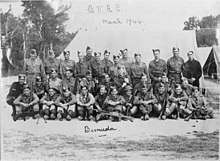
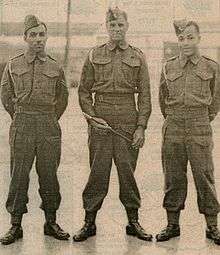
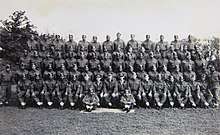
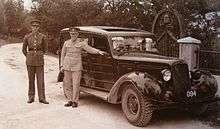

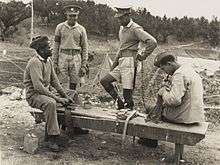
%2C_St._David's%2C_Bermuda_in_2011.jpg)
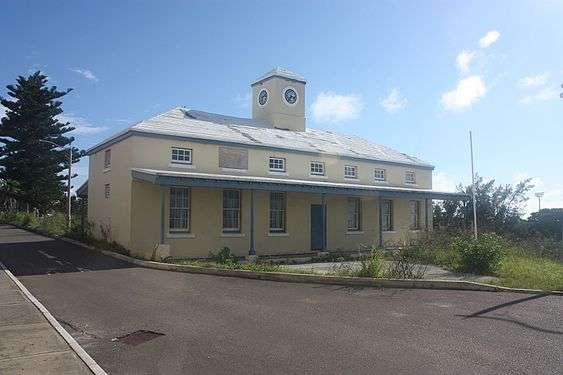
During the Second World War, as had been the case during the First World War, the units posted to Bermuda to provide the regular infantry company on garrison included reserve units from the Canadian Army (as the Canadian Militia had been renamed in 1940), embodied for the duration of the war. At the start of the war a company of the 2nd Battalion, King's Shropshire Light Infantry was on deployment to Bermuda. They were succeeded by the Canadian Army's Winnipeg Grenadiers in 1940, a company of the 4th Battalion, Queen's Own Cameron Highlanders (including future Major Donald Henry "Bob" Burns, MC, who would be a Second-in-Command of the Bermuda Regiment, Town Crier of St. George's, and Guinness world record holder for loudest human speaking voice) in 1942, and a company of the Canadian Pictou Highlanders from 1942 to 1946.
As during the First World War, the part-time units were again mobilized for the duration, becoming full-time. Conscription was quickly introduced, with all military-age British males resident in Bermuda liable for service. The regular army infantry company operated the headquarters of the Garrison at Prospect Camp, and took responsibility for patrolling and guarding in the central parishes. The BVRC took responsibility for patrolling and defending the East End of Bermuda, and the BMI for the West End. In addition to maintaining guards at the Dockyard and Darrell's Island, the infantry soldiers guarded the trans-Atlantic cable facilities, beaches and inlets, patrolled the island, and operated motor boat patrols.
The BMA manned the Examination Battery in St. David's, which guarded the primary entrance through the reefs to Bermuda's harbours from the open Atlantic. By 1939, this was the only fixed battery left in use in Bermuda, though others were theoretically able to be returned to use. Similar 6" guns were fixed at the Dockyard, but it was felt that a capital ship could potentially bombard the Dockyard from off the South Shore, out of range of both batteries. As a result, a new battery was built on a hilltop within Warwick Camp, with two 6" guns mounted there. These too were manned by the BMA.
The Bermuda Volunteer Engineers filled two roles. They continued to operate spot lamps at the coastal artillery batteries, lighting targets for the BMA gun crews at night. In 1937, the BVE had also absorbed the BVRC's signals section, and assumed responsibility for providing signals detachments for all branches of the garrison, as well as to the Royal Naval Dockyard and to the RAF air station at Darrell's Island.
The BVRC sent a draft to the Lincolns (with volunteers from the other local units attached for the transit) in 1940, following which concern of denuding the garrison meant a moratorium was placed on any further drafts overseas by the local units (although many soldiers were released from their units to train as pilots at the Bermuda Flying School on Darrell's Island). The school only accepted volunteers from amongst those already serving in one of the local army units. Eighty-eight men were sent to the Royal Air Force and Fleet Air Arm before the school closed in 1942, following which it was reorganised as a recruiting arm for the Royal Canadian Air Force, sending 200 aircrew trainees to that unit. The Bermuda Flying School was headed by Major Montgomery-Moore, DFC, who was also the Commanding Officer of the BVE.

In addition to the British Army and Royal Naval units in Bermuda during the War, a Royal Canadian Navy base, HMCS Somers Isles, operated at the former Royal Naval site at Convict Bay, and four airbases were operated in Bermuda – one by the Royal Navy's Fleet Air Arm, the Royal Air Force used RAF Darrell's Island, the US Navy operated flying boats from the US Naval Operating Base, and the US Army Air Force and the RAF shared an airfield built by the US Army, Kindley Field.
Although air and naval units based in Bermuda played an active part in the War, the Axis Powers never dared to launch a direct attack on the colony. With the US entry into the war in 1942, and the considerable buildup of a US Army garrison of artillery and infantry forces in Bermuda, as well as the decreased danger posed by German surface ships and submarines, the moratorium preventing local units sending drafts overseas was lifted in 1943.[22][23][24] The Home Guard was raised at the same time, conscripting for part-time service from those men who had been exempted from full-time service. The unit took over some of the duties of the BMI and the BVRC, enabling the full-time units to send contingents overseas.
The BVRC sent a second detachment to the Lincolnshire Regiment, and the Bermuda Militia (Artillery and Infantry together) sent a draft which formed the training cadre and the core of the new Caribbean Regiment.
Other than those needed to defend their bases, US ground forces were withdrawn on the war's end.
1945 to 1957
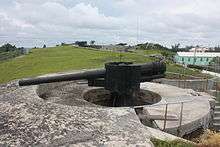
Following the war, the BVE and BMI, as well as the Home Guard, ceased to existed. The BMA and BVRC were both demobilised, reduced to skeleton staffs. Both were quickly built back up to strength in 1951, and conscription, which had been used during the war, was re-introduced for both units (the BVRC suitably being retitled simply Bermuda Rifles), although the conscripts served on a part-time basis, whereas wartime service had been full-time for the duration. The last coastal artillery, the Examination Battery on St. David's Head, was removed from use in 1953, and the BMA converted to the infantry role (but remained nominally part of the Royal Regiment of Artillery). The last Imperial Defence Plan was issued the same year. After that, the local units no longer had a role under Imperial defence planning.
The Regular Army component of the garrison continued to include a full infantry company of 250 soldiers, plus a variety of atts and dets (attachments or detachments from others corps, such as the Royal Electrical and Mechanical Engineers). A company of the Gloucestershire Regiment (the Glosters) was posted to Prospect Camp in 1947, but this was sent to British Honduras the following year in response to a Guatemalan threat of invasion.[25][26] Three Bermudians who had served in the BVRC during the war (Bernard L. Martin, Robert Wheatley, and Vernon Smith) re-enlisted into the Gloucestershire Regiment during its posting in Bermuda and subsequently took part in the Battle of Imjin River, during the Korean War.[27] The Glosters were replaced by a detachment of The Highland Brigade in 1949.
In 1951, it was announced that the Royal Naval Dockyard would be closed, with much of its establishment withdrawn immediately. The process of running the naval base down would stretch over the rest of the decade (though part of the base, HMS Malabar, would operate 'til 1995). In November, 1952, it was decided to withdraw the Regular Army garrison, too, which was completed by 1 May 1953. However, during the Bermuda Conference of the 4th to 8 December 1953, the Prime Minister, Sir Winston Churchill, met with the US President Dwight D. Eisenhower and French Premier Joseph Laniel in the colony to discuss the security of Western Europe.[28][29] A detachment of the Royal Welch Fusiliers had to be brought in for the period of the conference. The concerns of the Government of Bermuda and other interested parties were put to the Prime Minister during his stay in Bermuda, and as a result 'A' Company, 1st Battalion, Duke of Cornwall's Light Infantry (1 DCLI) arrived to resume garrison duty at Prospect Camp in 1954.[30]
The decision to continue the garrison was reconsidered in 1957. When Churchill had visited in 1953, the British Army had numbered over 400,000 soldiers, but the 1957 Defence White Paper called for the end of National Service, and the reduction of the Regular Army to 165,000 professional soldiers. Given the much smaller size of the army with the resultant difficulties in meeting its obligations, the high cost per man of the Bermuda Garrison, and the presence of the two part-time units that would remain in Bermuda (and which were capable of absorbing the responsibilities or the regular detachment), it was decided to withdraw the DCLI and all other regular soldiers (other than Permanent Staff Instructors and other attachments to the territorial units and the Aide-de-camp (ADC) to the Governor) from Bermuda by the end of May. This was despite strong arguments in the House of Commons for the retention of the Garrison by Bermuda-raised Denis Keegan, the Member of Parliament (MP) for Nottingham South, and Frederic Bennett, MP for Torquay.[31] A Company DCLI reunited with E Company, which had been posted to British Honduras, and both were returned to England. The Officer Commanding A Company, Major J. Anthony Marsh, DSO, a Second World War veteran of the Special Air Service, took permanent residence in Bermuda after leaving the Regular Army, retiring from military service in 1970 as a Lieutenant-Colonel, commanding the Bermuda Regiment (a 1965 amalgam of the BVRC and BMA).[32]
The Bermuda Government maintained both territorial units (the BMA being predominantly Black; the BVRC restricted to Whites) until 1965, at which time they were amalgamated into the Bermuda Regiment. Although trained in conventional light infantry tactics, the Bermuda Regiment has sought new roles to justify the expenditure required to maintain it, including readiness for Internal Security roles supporting the Bermuda Police Service, providing hurricane relief in Bermuda and other British territories, and taking an increasing hand in maritime patrol. It has also taken on responsibility for providing ceremonial parades that previously had chiefly fallen on the professional soldiers.
Post 1957


Although no further regular units have been garrisoned in Bermuda since 1957, detachments have been sent to Bermuda occasionally for internal security, training, recreational, or ceremonial purposes, including elements of the airborne forces, which were on Bermuda for training exercises with the Bermuda Regiment when Governor Sir Richard Sharples and his ADC, Captain Hugh Sayers, were murdered on 10 March 1973. A state of emergency was declared, and the Bermuda Regiment and the airborne soldiers (as well as the Royal Marines detachment from the frigate HMS Sirius, serving as West Indies Guard Ship, and docked at HMS Malabar)[33] were called in to assist the civil authorities. The 23 Parachute Field Ambulance, 1 Parachute Logistic Regiment and the band of the 1st Battalion, The Parachute Regiment subsequently provided protection for Government buildings and officials as well as assisting the Bermuda Police.
The 1st Battalion Royal Regiment of Fusiliers was briefly despatched to Bermuda at the request of the local government as a result of riots in 1977 (following the death sentences given to the two men responsible for the murders of the Governor and his ADC, as well as of the 1972 murder of Police Commissioner George Duckett and the 1973 murders of two staff members of a grocery store). At the time, the Bermuda Regiment numbered about 400 officers and men. While sufficient to guard key points around the island, this did not allow for a reserve of men in barracks, and the soldiers assigned to guard duty could not be rotated back to barracks for periods of rest. This shortfall was taken into account by Major-General Glyn Gilbert, the highest-ranking Bermudian in the British Army, when he issued a report on the Bermuda Regiment in which he made a number of recommendations, including its increase to a full battalion of about 750, with three rifle companies and a support company.
The Bermuda Regiment (now the Royal Bermuda Regiment) trained for the Internal Security role to support the police, but with threat of civil unrest fading over the following decades, it sought new roles, especially the response to hurricanes. Its expertise means it has been increasingly called on to provide similar relief in British Overseas Territories and Commonwealth countries in the West Indies which lack Bermuda's resources. Teams of volunteers have been flown to a series of islands since the 1980s by Royal Air Force transport, helping to fulfill the British Government's obligations to territories throughout that region.[34]
Gallery
_officers_in_Bermuda_1905.jpg) 3rd Battalion, The Royal Fusiliers (City of London Regiment), officers in Bermuda in 1905
3rd Battalion, The Royal Fusiliers (City of London Regiment), officers in Bermuda in 1905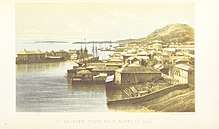 Ordnance Island (left) and St. George's Town as seen from Barrack Hill in 1857
Ordnance Island (left) and St. George's Town as seen from Barrack Hill in 1857
See also
References
- Rootsweb: Ships of Bermuda - 1700-1749: HMS Lincoln
- The Telegraph: The $100 man: Why philanthropist James Martin gave away his fortune
- Private Island News: Futurist James Martin’s Historic Bermudan Isle
- "Bermuda Online: British Army in Bermuda from 1701 to 1977; 1881 to 1883". Archived from the original on 21 August 2014. Retrieved 23 April 2014.
- "Mount St. Agnes Academy website: History". Archived from the original on 21 August 2013. Retrieved 25 July 2014.
- The Empire Project: The Rise and Fall of the British World-System, 1830–1970, by John Darwin. Page 257 to 266. Cambridge University Press, 24 September 2009. ISBN 9780521302081
- "bma". Archived from the original on 8 August 2009. Retrieved 22 February 2007.
- 27557 Sapper ARCHIBALD LINDSAY, Royal Engineers: 5. ASSIGNMENTS AND CAMPAIGN SERVICE; Halifax and Bermuda (1896-1902). By Lieutenant-Colonel Edward De Santis. 2005
- Submarine Miners Volunteers. By Glyn Davies. Rootsweb.
- Fort Gilkicker website: Fort Monckton and the Submarine Mining Establishment
- Little Bermuda's Precautions: Her Harbour Sown Thickly and Ingeniously with Torpedoes. Daily Alta California, Volume 42, Number 14108, 15 April 1888. California Digital Newspaper Collection (CDNC). Digital Library Consulting.
- Canadian Soldiers in Bermuda During World War One, by Jean-Pierre Gagnon. York University Libraries.
- The Long, Long Trail: The British Army in the Great War of 1914-1918. The East Yorkshire Regiment
- History of the Bermuda Militia Artillery, by Jennifer Hind, author of "Defence, Not Defiance: A History of the BVRC".
- THE ROYAL GAZETTE, 8 DECEMBER 1914: B.V.R.C. 100 MEN ACCEPTED FOR SERVICE. Camp Training Begins To-day
- The Royal Gazette: B.V.R.C. CONTINGENT. LIST OF VOLUNTEERS FOR THE FRONT. TRAINING IN WARWICK CAMP. March Through Hamilton. A FEW MORE NEEDED FOR COMPANY
- THE ROYAL GAZETTE, 21 JANUARY 1915: B.V.R.C. CONTINGENT TAKE TEA AT THE LITTLE GREEN DOOR
- THE ROYAL GAZETTE, 26 JANUARY 1915: B.V.R.C. The Active Service Contingent. MEMORANDUM FROM HIS EXCELLENCY THE GOVERNOR. Appeal For Recruits.
- THE ROYAL GAZETTE, 6 May 1915: TWO GENERATIONS FROM ST. DAVID'S
- Army Notes. Royal United Services Institution Journal, Volume 73, Issue 490, 1928
- UK Parliament house of commons debate: ARMY ESTIMATES, 1928. 8 March 1928. vol 214 cc1261-310 1261
- Bermuda Forts 1612–1957, Dr. Edward C. Harris, The Bermuda Maritime Museum Press, ISBN 0-921560-11-7
- Wings that were never clipped, an article on Captain Frederick Walter "Clip" Clipper, US Army, US Air Force, by Dr. Edward C. Harris. The Royal Gazette. Published 28 July 2012
- MEDICAL SUPPLY IN THE WAR AGAINST THE EUROPEAN AXIS, United States Army Medical Department Office of Medical History
- "Warlike Noises: British Honduras. Britain's Small Wars". Archived from the original on 15 April 2014. Retrieved 23 April 2014.
- "British Army in Bermuda from 1701 to 1977. By Keith Archibald Forbes. Bermuda Online". Archived from the original on 21 August 2014. Retrieved 23 April 2014.
- Obituary of Bernard Leroy Martin, 1924 - 1997. THE ROYAL GAZETE, Wednesday, 11 March 1998.
- FOREIGN RELATIONS OF THE UNITED STATES, 1952–1954, WESTERN EUROPEAN SECURITY, VOLUME V, PART 2: F. Bermuda Conference of the Heads of Government of the United States, the United Kingdom, and France, December 4–8, 1953. Office of the Historian, Bureau of Public Affairs, United States Department of State
- [1953] The Big 3 Conference. Bermuda History blogspot
- A Company, 1st Battalion, The Duke of Cornwall's Light Infantry: Prospect Garrison, Devonshire Bermuda: 1954 - 1957.
- UNITED KINGDOM GARRISON, BERMUDA (WITHDRAWAL). House of Commons Debate, 22 May 1957. Parliament of the United Kingdom of Great Britain and Northern Ireland
- "Outstanding Special Air Service WWII Distinguished Service Order group to Lieutenant Colonel John Anthony Marsh". Warwick & Warwick. Archived from the original on 2 May 2014.
- "Sirius Business: Or life as part of a ship's Royal Marine Detachment in the West Indies. By Marine Mick Pinchen. Britain's Small Wars". Archived from the original on 28 April 2014. Retrieved 23 April 2014.
- Bermuda Regiment to the rescue here...and overseas, by Kyle Hunter, The Royal Gazette. Published Jun 15, 2011
Bibliography
- Defence, Not Defiance: A History Of The Bermuda Volunteer Rifle Corps, Jennifer M. Ingham (now Jennifer M. Hind), The Island Press Ltd., Pembroke, Bermuda. ISBN 0-9696517-1-6
- The Andrew And The Onions: The Story Of The Royal Navy In Bermuda, 1795 – 1975, Lt. Commander Ian Strannack, The Bermuda Maritime Museum Press, The Bermuda Maritime Museum, P.O. Box MA 133, Mangrove Bay, Bermuda MA BX. ISBN 978-0-921560-03-6
- Bermuda Forts 1612–1957, Dr. Edward C. Harris, The Bermuda Maritime Museum Press, The Bermuda Maritime Museum. ISBN 978-0-921560-11-1
- Bulwark Of Empire: Bermuda's Fortified Naval Base 1860–1920, Lt.-Col. Roger Willock, USMC, The Bermuda Maritime Museum Press, The Bermuda Maritime Museum. ISBN 978-0-921560-00-5